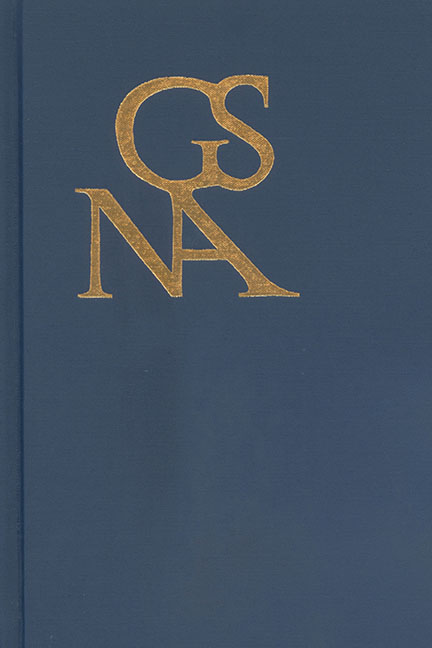Weimar: An Experiment in Creativity?
Published online by Cambridge University Press: 28 October 2020
Summary
Alles Gute was geschieht wirkt nicht einzeln.
Seiner Natur nach setzt es sogleich das
Nächste in Bewegung.
—J. W. Goethe, “Über die verschiedenen Zweige der hiesigen Tätigkeit”THE DUCHY OF Saxe Weimar-Eisenach was poor in resources and had few significant geographical features facilitating large-scale trade. Friedrich Justin Bertuch (1747–1822), financial advisor to Duke Carl August and businessman, characterized the economic situation of Weimar as not suitable for industry other than for commerce in literary and artistic products. Yet, two hundred years later, the Sonderforschungsbereich Ereignis Weimar described Weimar as a cumulative synergetic effect deriving from a range of forces. With this assessment, its research trajectory also unpacked and problematized the older notion of Weimar as a static cultural center, a Musenhof, extending an implied dialogue with Bertuch. As the many detailed analyses in the Ereignis Weimar context show, contributors to this synergistic network around 1800 included not only the men and women at the Weimar court, but civil servants, artists, and writers, and also the middle-class population that served as producers and consumers of cultural products.
In any case, it is clear that Saxe Weimar-Eisenach implemented a cultural program around 1800 allowing it to become a discursive and empirical center of culture. In the four-part analysis that follows, the first section focuses on structural innovations implemented by the court that set the experiment in motion and led to the empirical-material changes. In the process, I illuminate the court's hiring of innovators, the creation of the Freye Zeichenschule, and the unconventional establishment of Bertuch's publishing house and the Landes-Industrie-Comptoir. In the second section, I will elaborate on creativity from Goethe's perspective and explore the discursive construction of the Weimar creative experiment by focusing on Goethe's perceptive assessment of the conceptual conditions in Weimar responsible for sparking the imagination (Einbildungskraft). I closely examine Goethe's understanding of the elements of creativity and the way they foster innovation, exploring his expression of these ideas in several nonfictional texts: the hopeful “Rede bei der Eröffnung der Freitagsgesellschaft” (1791) and “Über die verschiedenen Zweige der hiesigen Tätigkeit” (1795), and the later more pessimistic report on “Museen zu Jena.
- Type
- Chapter
- Information
- Goethe Yearbook 27 , pp. 165 - 184Publisher: Boydell & BrewerPrint publication year: 2020



